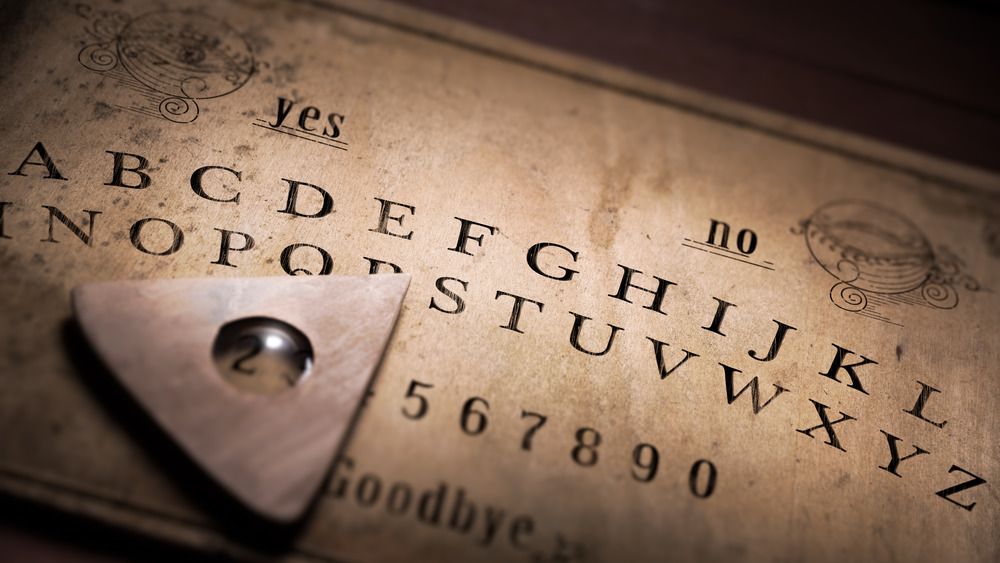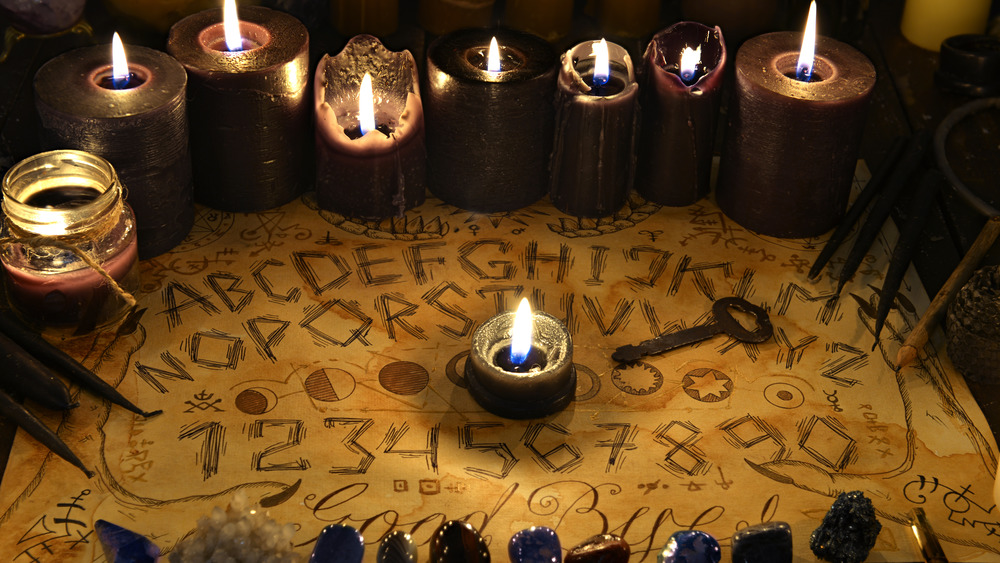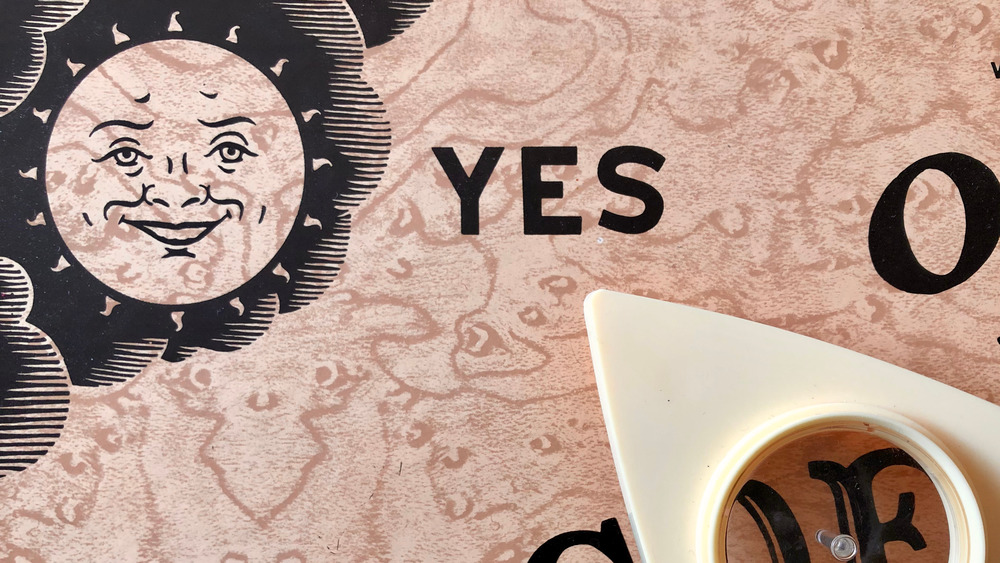How A Ouija Board Was Connected To A Murder
Ouija boards have developed a certain reputation over the years. Movie after movie has used Ouija boards in plots about séances, demons, spirit invasions, and so forth, including the tried-and-true "contact the dead to find out how they really died" plot of The Uninvited (1944), the vomit-filled possession-and-priest classic The Exorcist (1973), schticky nonsense like Sorority House Massacre 2: Nighty Nightmare, (1990), and Netflix's "scariest movie ever" (as NME says), Verónica (2017). These media depictions help fuel the fire of fear surrounding what was once a Sears catalogue-sold board game marketed as "... Remarkable, interesting, and mystifying game. Great mirth ... for parties," as recounted by the The Guardian. William Fuld is credited as the brilliant marketer who spun the connection between Ouija boards and clairvoyance, ancient mysticism, and so on.
"Ouija" is actually a brand name for a type of game called a "talking board" that grew in popularity along with a rise in interest in spiritualism after the Civil War. In the years following a conflict full of death, strife, and acrimony, even within families, it's understandable that people wanted some sense of resolution between themselves and loved ones lost on far-flung battlefields. Ouija boards came to be taken rather seriously as devices for contacting the dead, and in the case of one eventual 1930 crime, a Ouija board was used in just this way to contact the victim of an absolutely bizarre murder.
Advice from the dead about who to kill
Ouija boards, in fact, have been blamed for bloody assaults, possessions, and summoning demonic creatures to assault or kidnap people, as Listverse outlines. And in the case of six US intelligence officers, a Ouija board apparently encouraged them to go AWOL in Florida while looking for a psychic in preparation for the Rapture of Jesus in 1990 (spoiler: didn't happen). Believe it not, though, that last case is not the oddest or most convoluted Ouija crime — not by far. That prize belongs to a murder involving (you ready?): a sculptor and his model, secret letters, a hammer to the head, hexes and witchcraft, and a dude named Sassafras Charlie.
Let's start at the end. On March 7, 1930, a woman named Clothilde Marchand opened her door in Buffalo, New York, whereby she was promptly beaten to death with a hammer and had a chloroformed rag stuffed into her throat and nostrils. The suspect, as Buffalo News describes, was Lila Jimerson, a 33-year old model for Clothilde's sculptor husband, Henri. According to police reports, Jimerson convinced 66-year old Nancy Bowen to use a Ouija board to contact Bowen's dead husband, Sassafras Charlie. Sassafras said that Clothilde had killed him, and his spirit even provided a physical description of Clothilde, as well as her address. After this, Bowen started getting letters in the mail from a "Mrs. Dooley" claiming that Clothilde was a witch who had hexed her deceased husband.
A magical disguise for an affair and a murder
If this at all sounds like a setup, yeah — it totally was. Jimerson, it seems, had been having an affair with Clothilde's husband Henri (the sculptor), who admitted later in Jimerson's trial that he seduced his models in order to get them to disrobe from the waist up. Reason being? His models were indigenous peoples who were "naturally shy." Jimerson and Brown were both members of the Cayuga tribe, in fact, and while mustering the courage to murder Clothilde, unsuccessfully tried to summon tribal spirit warriors to do the deed. When that failed (after six months), they just went with the whole hammer-and-chloroform thing. And as for why Jimerson manipulated Brown into aiding her to murder Clothilde to begin with? And why she didn't blame Henri and herself, rather than Clothilde, for her affair? No spirits needed there: just plain old human fear and contrition.
On the surface, then, this incident could be labelled as a "Ouija board" murder. In reality, the only magic of the case was the rationale of those involved and the circuitousness of the case's narrative. It does seem like Ouija boards are connected to lots of bizarre events, it's true. But whether or not they're used as magic devices, they're certainly excellent scapegoats.


